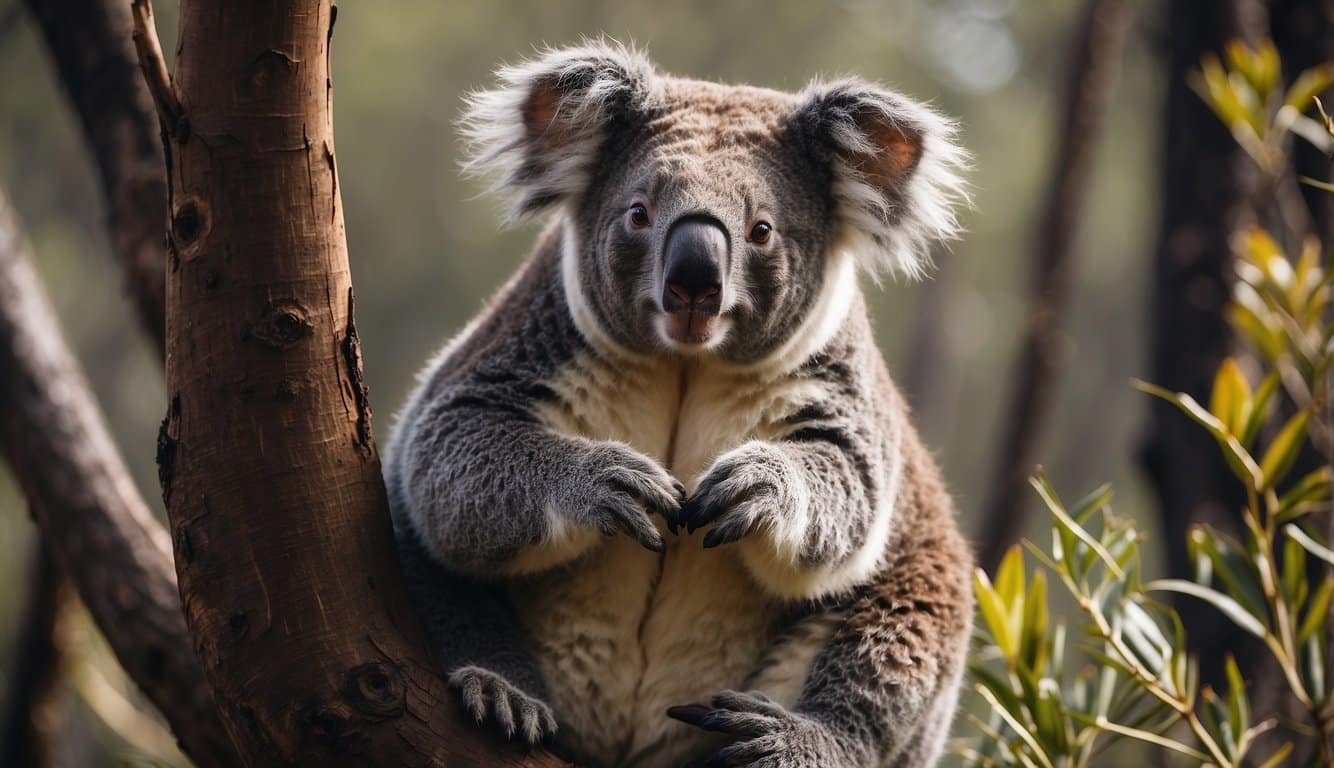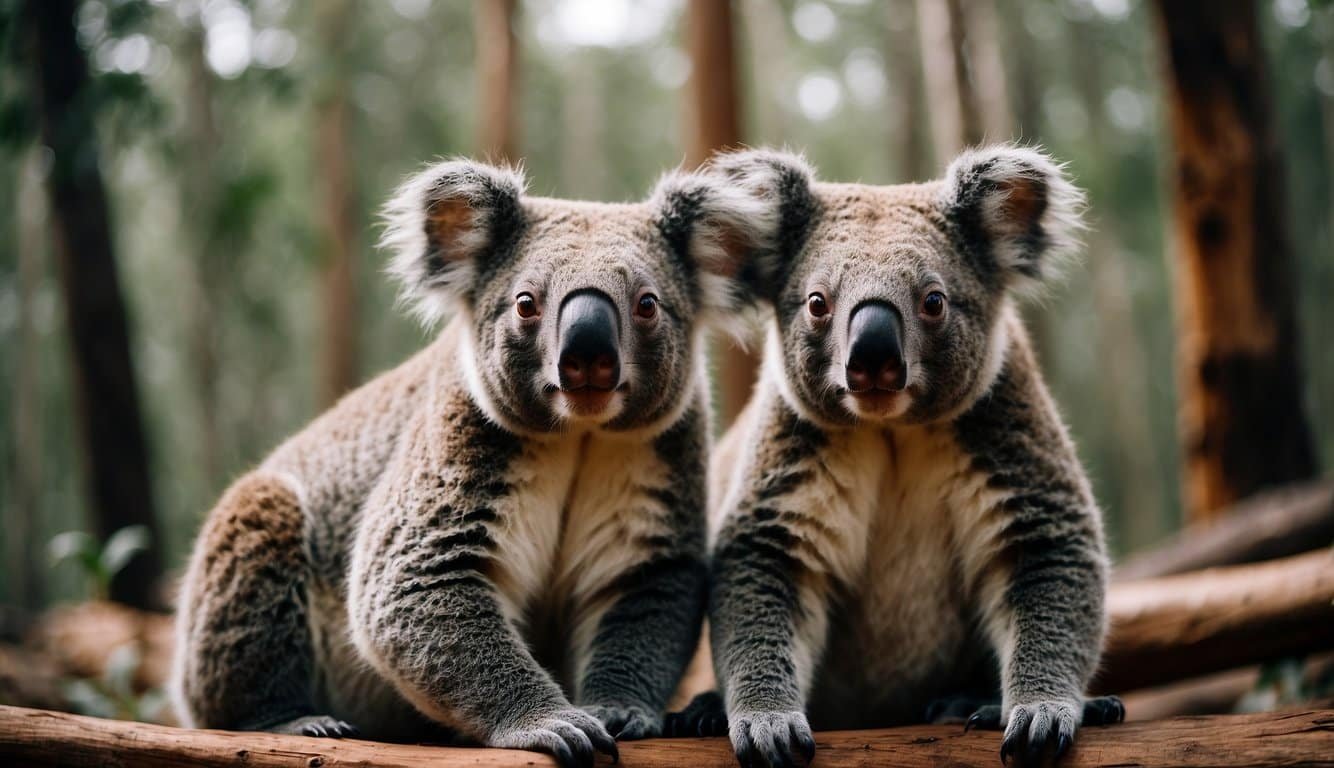Koala Conservation Status
Koalas, the adorable and iconic Australian marsupials, are often seen as a symbol of Australia’s unique wildlife. However, their existence has come under threat in recent years. The conversation around the conservation status of koalas is a complex one, with their populations experiencing severe pressure due to habitat destruction, climate change, and diseases such as chlamydia.
The Australian Koala Foundation has highlighted the critical state of koalas, suggesting that without urgent action, the future of this species may be at risk. As of now, koalas are listed as “vulnerable” under the Environment Protection and Biodiversity Conservation Act. This status reflects the declining numbers and the increasing vulnerability of the animal to extinction in the wild.
Conservation groups and scientists are tirelessly working towards understanding the intricacies of koala populations. They have noted regional differences affecting their conservation, from the abundance of koalas in some areas to near absence in others. In certain parts of Australia, koalas are at risk of becoming “functionally extinct”, meaning their populations are too low to ensure long-term survival.
Conservation efforts are focusing on protecting and restoring koala habitats while managing threats from urban expansion and disease outbreak. Forest protection, along with disease management, is seen as essential for koala conservation. Continuous research, including demographic forecasting, helps to inform conservation strategies and policies aimed at preventing further decline of koala populations.
Mitigating the threats to koalas is a complex challenge, requiring a multi-faceted approach that combines legal protection, scientific research, and community engagement to ensure these beloved animals persist for generations to come. The collective efforts of the community, conservation groups, and policymakers are crucial in turning the tide for koalas.
Threats to Koalas

Koalas are facing a myriad of challenges that threaten their existence. From environmental changes to direct human impacts, their survival hangs in a delicate balance.
Habitat Destruction
Habitat loss is a significant factor, with activities such as land clearing and deforestation for urbanization and land development devastating the eucalyptus forests koalas call home. In areas like Queensland and New South Wales, this leads to the disintegration of vital ecosystems.
Climate Impact
Climate extremes, exacerbated by global warming, are increasing the frequency of bushfires and heatwaves. Increased fire seasons and severe droughts have a profound impact on koalas’ habitat and food sources.
Health Challenges
Diseases such as chlamydia and complications from dog attacks pose health challenges. The problem is compounded by low genetic diversity, leading to inbreeding and weaker local populations that are less resilient against disease and environmental stresses.
Human Intrusion
Human activities extend beyond habitat destruction. The pursuit of economic growth leads to increased mining, land development in rural areas, and infrastructure that intrudes into koala habitats. Even the fur trade has contributed to their historical decline.
Food and Shelter
Koalas rely almost exclusively on eucalyptus trees for food and shelter. Due to habitat clearing and food degradation, these essential resources are dwindling. This loss not only starves them but also leaves koalas vulnerable to predators and the elements.
Conservation Measures

Successful conservation of koalas hinges on a multipronged strategy that includes legislative protection, ongoing research, dedicated rehabilitation, and critical genetic management.
Legislation and Protection
Koalas have been recognized as a vulnerable species, with specific states in Australia enacting legislation to protect both the animals and their habitats. In Queensland, New South Wales, and the Australian Capital Territory, they are listed under the respective Nature Conservation Acts, reflecting the government’s commitment to address threats like habitat destruction and bushfires. Australia’s Environment Protection and Biodiversity Conservation Act provides a legal framework for conservation efforts across the country, and recognition in the US under the Endangered Species Act offers an international layer of acknowledgement and support.
Research and Education
Universities and conservation groups across Australia conduct substantial research to understand koala biology, health, and habitat requirements. Institutions like the University of Queensland work tirelessly to advance knowledge on koala management and health, covering aspects such as disease impact and the role of nutrition. Education initiatives are crucial in spreading awareness about the importance of koalas in the ecosystem and rallying public support for their conservation.
Rehabilitation Initiatives
Koala rehabilitation centers, including the notable Koala Hospital of Port Macquarie, are on the frontline, rescuing and treating injured or ill koalas with the aim of releasing them back into the wild. Supported by volunteers and donations, these facilities play a pivotal role in mitigating the short-term impacts of threats like bushfires and disease, ensuring individual koalas have a second chance at life.
Preservation of Genetics
Maintaining genetic diversity is a cornerstone of long-term koala survival. Conservation biologists prioritize this by monitoring local populations to prevent inbreeding, which can be exacerbated by habitat fragmentation. Efforts to preserve genetic diversity also include innovative strategies like rewilding and translocating individuals to boost gene flow among different populations, fortifying the species against threats and ensuring resilience.

